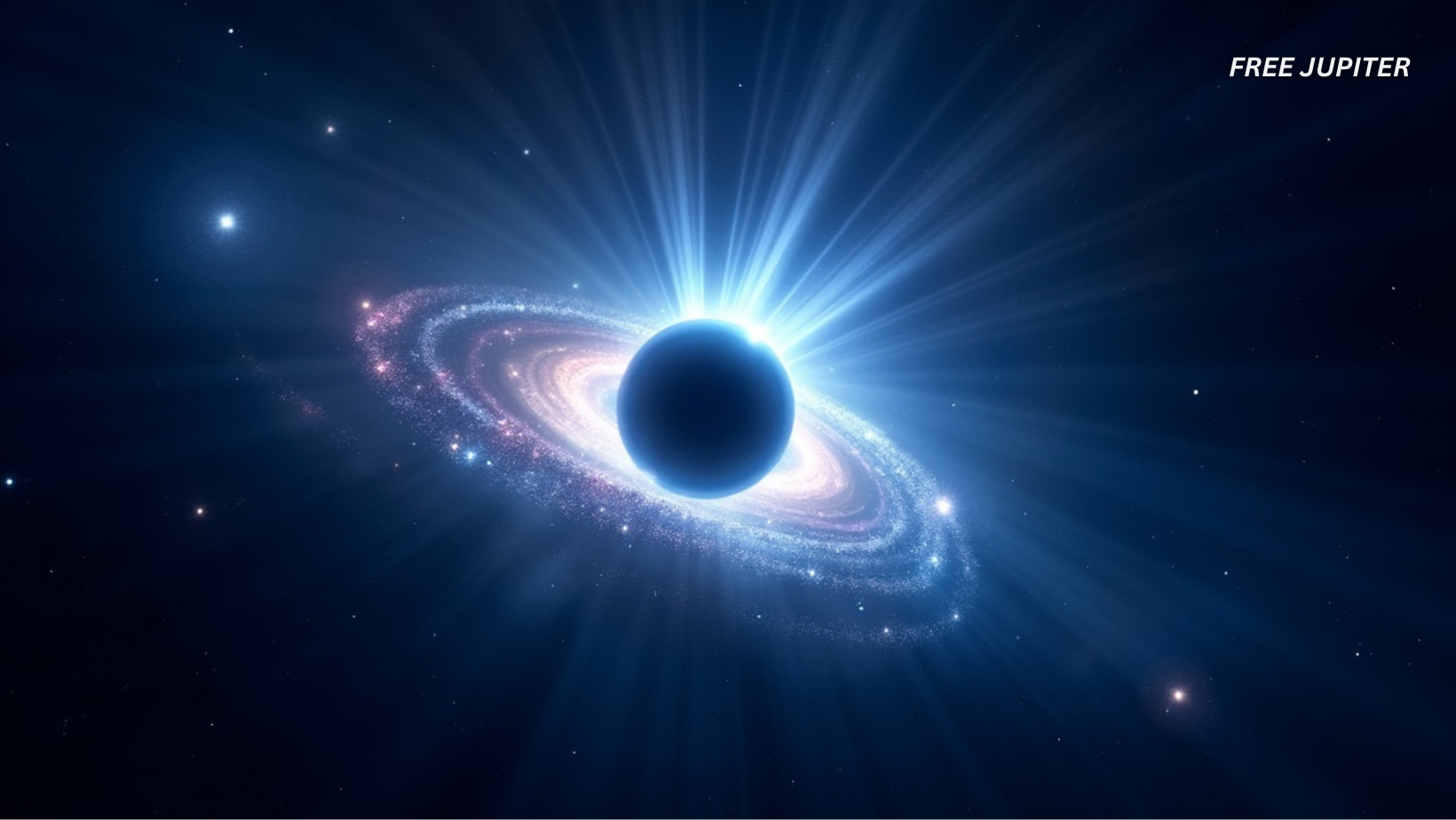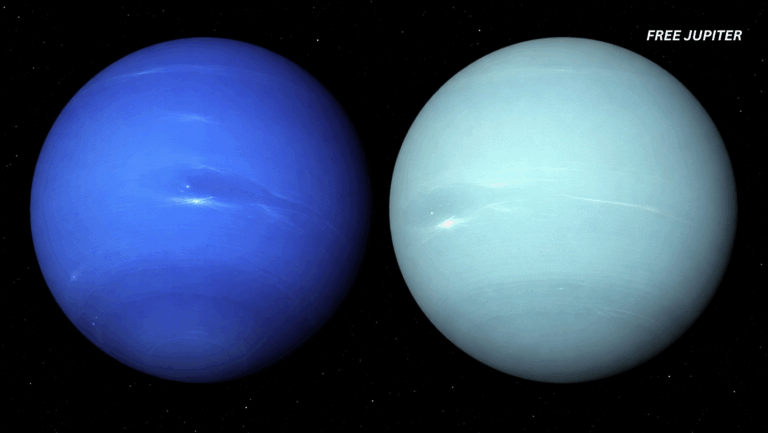Friendly Note: FreeJupiter.com shares general info for curious minds 🌟 Please fact-check all claims—and always check health matters with a professional 💙
The discovery of colossal plasma jets extending far beyond the size of our galaxy from a supermassive black hole in the early universe marks a significant milestone in astrophysics.
These jets, emanating from the quasar J1601+3102, provide a rare glimpse into the complex dynamics of black holes and their influence on galactic evolution less than 1.2 billion years after the Big Bang.
This article delves deeper into the nature of these cosmic jets, the mechanisms behind their formation, and their broader implications for our understanding of the universe.
Unveiling the Giant Jets of J1601+3102
The quasar J1601+3102 hosts a supermassive black hole that propels plasma jets stretching an extraordinary 215,000 light-years—more than twice the width of the Milky Way.
Such an immense structure is unprecedented for this early cosmic epoch, making it a crucial subject for studying how jets originate and evolve alongside their host galaxies.
Astrophysicist Anniek Gloudemans and her team at the National Science Foundation’s NOIRLab sought quasars exhibiting strong radio jets in the early universe to unravel the timeline and impact of jet formation.
Their observations combined data from several telescopes: the Low Frequency Array (LOFAR) in Europe, Gemini North in Hawaii, and the Hobby-Eberly Telescope in Texas. This multi-faceted approach was essential because these jets emit primarily in radio wavelengths, which are invisible to optical telescopes alone.
The Anatomy of Black Hole Jets
At the heart of these jets lies the supermassive black hole, surrounded by an accretion disk—a swirling mass of gas and dust spiraling inward under intense gravity. As this material accelerates and heats up to millions of degrees, it emits a brilliant glow, creating the quasar’s characteristic luminosity.
However, not all matter crosses the event horizon. Magnetic fields near the black hole’s poles twist and coil due to the black hole’s spin, funneling some of this material outward at nearly the speed of light in narrow, focused beams of plasma.
This process is explained by the widely accepted Blandford-Znajek mechanism, where the rotational energy of the black hole is tapped to power these jets. The black hole’s spin drags surrounding space-time—a phenomenon known as frame dragging—twisting magnetic field lines into cones at the poles.
Charged particles spiral along these twisted fields, emitting synchrotron radiation that we detect as radio waves and visible light in some cases.
Read more: Astronomers Detect The Most Powerful Explosions in the Universe Since the Big Bang
What Are These Jets Made Of?
The jets consist of plasma—an ionized gas of electrons and positively charged ions. This plasma is accelerated to relativistic speeds, making black hole jets some of the most powerful particle accelerators in the universe.
Observations of jets, such as those from the supermassive black hole M87*, reveal bright knots or clumps of plasma moving outward, indicating dynamic and variable jet activity.
The plasma originates from the accretion disk material that does not fall into the black hole but is instead expelled along magnetic field lines. Photons and neutrinos are also part of the jets, contributing to their complex composition and energetic output.
The Role of Black Hole Mass and Accretion Rate
Interestingly, J1601+3102’s black hole has a mass of about 450 million Suns, which is modest compared to some quasars known to have black holes billions of times more massive. Moreover, its accretion rate—the speed at which it consumes matter—is not exceptionally high.
This challenges previous assumptions that only the most massive or rapidly feeding black holes can produce powerful jets.
Gloudemans points out that this finding implies a broader diversity among quasars, where even moderately sized black holes can launch enormous jets if the conditions are right.
This expands our understanding of black hole behavior in the early universe and suggests that jet formation may depend on factors beyond just mass and feeding rate.
Insights from Stellar-Mass Black Holes: A Universal Mechanism?
Studies of smaller, stellar-mass black holes—those formed from collapsing massive stars—offer clues that may apply universally to black holes of all sizes. Research led by Prof.
Kazutaka Yamaoka at Nagoya University has shown that jets form when the inner edge of the accretion disk rapidly moves inward, reaching the innermost stable circular orbit (ISCO). This dynamic shift triggers jet ejection, accompanied by changes in X-ray emissions.
Although stellar-mass black holes and supermassive black holes differ greatly in scale and environment, the underlying physics of jet formation may be similar. The rapid inward movement of accreting material and the interaction with magnetic fields appear to be key ingredients for launching jets across the black hole mass spectrum.
Read more: European Spacecraft Captures First-Ever Images of the Sun’s South Pole!
Magnetic Fields: The Cosmic Architects of Jets
Magnetic fields play a pivotal role in shaping and powering jets. As the black hole spins, it twists these fields, creating a magnetic funnel that channels plasma outward. When magnetic flux accumulates near the black hole’s center beyond a certain threshold, it can arrest accretion temporarily, forming what is known as a magnetically arrested disk (MAD).
This state can lead to highly efficient jet production, sometimes exceeding 100% efficiency in converting rotational energy into jet power.
Simulations show that the spin of the black hole and the strength of the magnetic fields determine the jet’s power and structure. The extraction of spin energy via magnetic fields not only fuels the jets but also exerts a braking torque on the black hole, influencing its rotational speed over time.
Cosmic Impact: Jets as Galactic Sculptors
Jets are not mere cosmic fireworks; they significantly influence their surroundings. By injecting enormous amounts of energy into the intergalactic medium, jets can regulate star formation within their host galaxies. They heat and disperse gas, preventing it from collapsing into new stars, thus shaping the evolutionary path of galaxies.
Moreover, jets serve as cosmic lighthouses, enabling astronomers to detect distant black holes across the universe. Their radio emissions penetrate vast cosmic distances, providing critical information about black hole activity in epochs otherwise difficult to observe.
The Future of Jet Studies
The discovery of J1601+3102’s gigantic jets opens new frontiers for exploring black hole phenomena in the early universe. Continued observations using multi-wavelength telescopes and advanced simulations will refine our understanding of jet mechanics and their role in cosmic evolution.
Future research aims to apply insights from stellar-mass black holes to supermassive ones, bridging scales to uncover universal principles governing jet formation. As technology advances, real-time monitoring of jet activity and detailed mapping of magnetic fields near black holes will become increasingly feasible.
Read more: The ‘City-Killer’ Asteroid Is Now Even More Likely to Hit The Moon in 2032
Conclusion
The immense plasma jets from the supermassive black hole in quasar J1601+3102 illuminate the dynamic interplay between black holes, magnetic fields, and accreting matter in the young universe. These findings challenge traditional views on the prerequisites for jet formation and highlight the intricate physics driving some of the most energetic phenomena known.
By studying these cosmic jets, scientists gain invaluable knowledge about the forces that sculpt galaxies and influence the large-scale structure of the cosmos. As we peer deeper into space and time, the enigmatic jets of black holes continue to reveal the extraordinary power and complexity of our universe.










